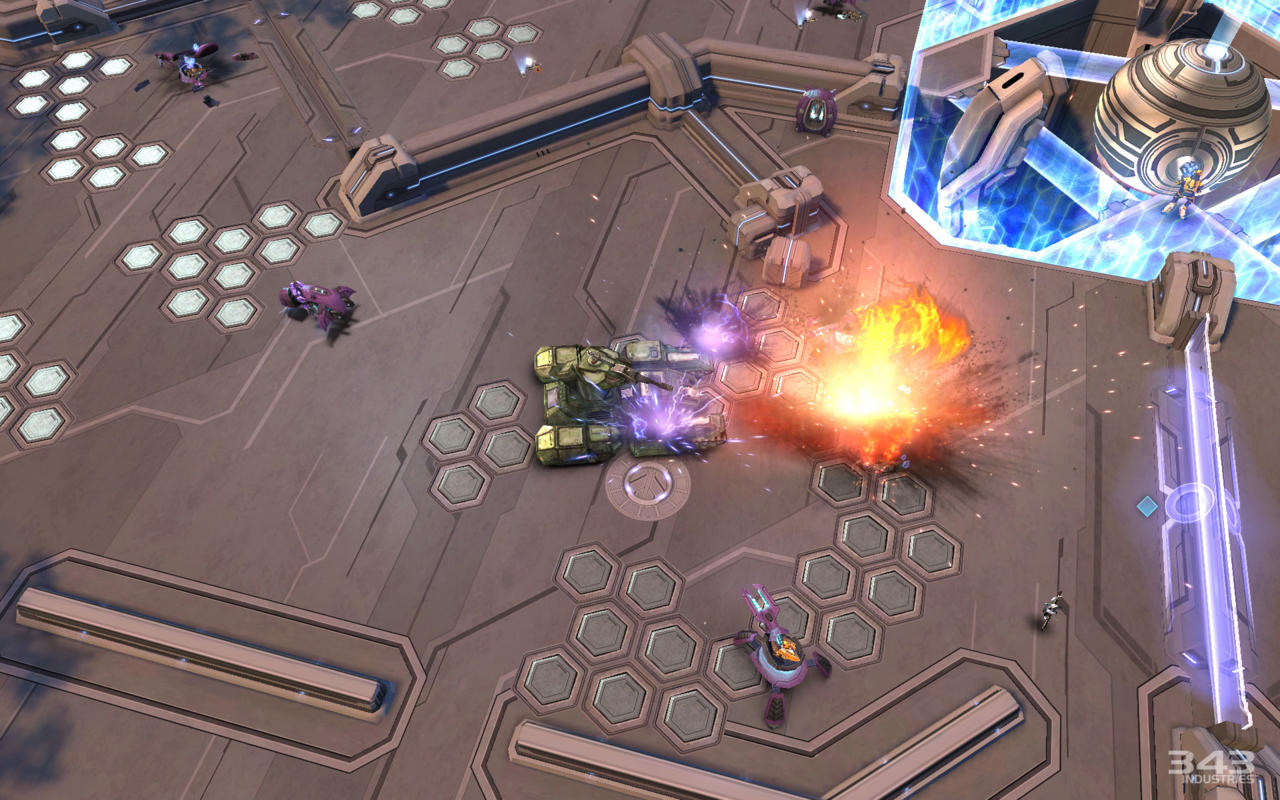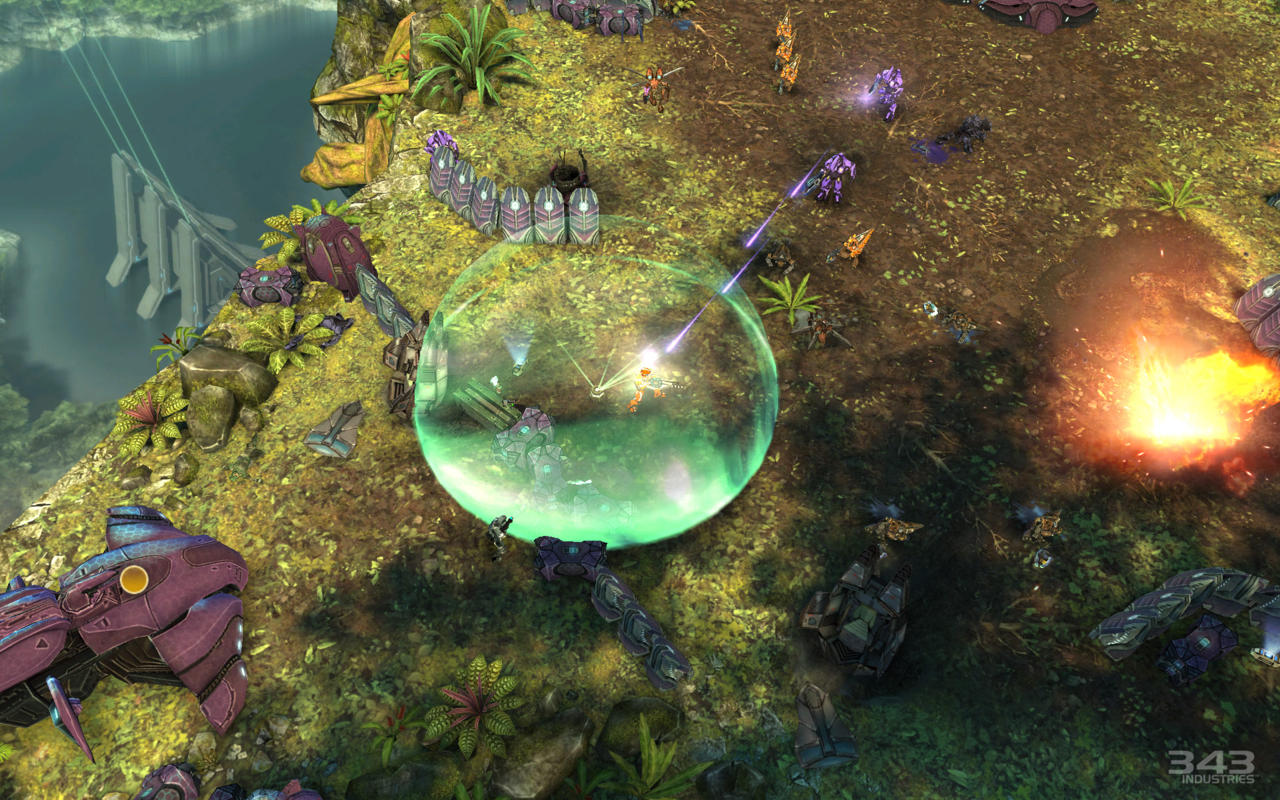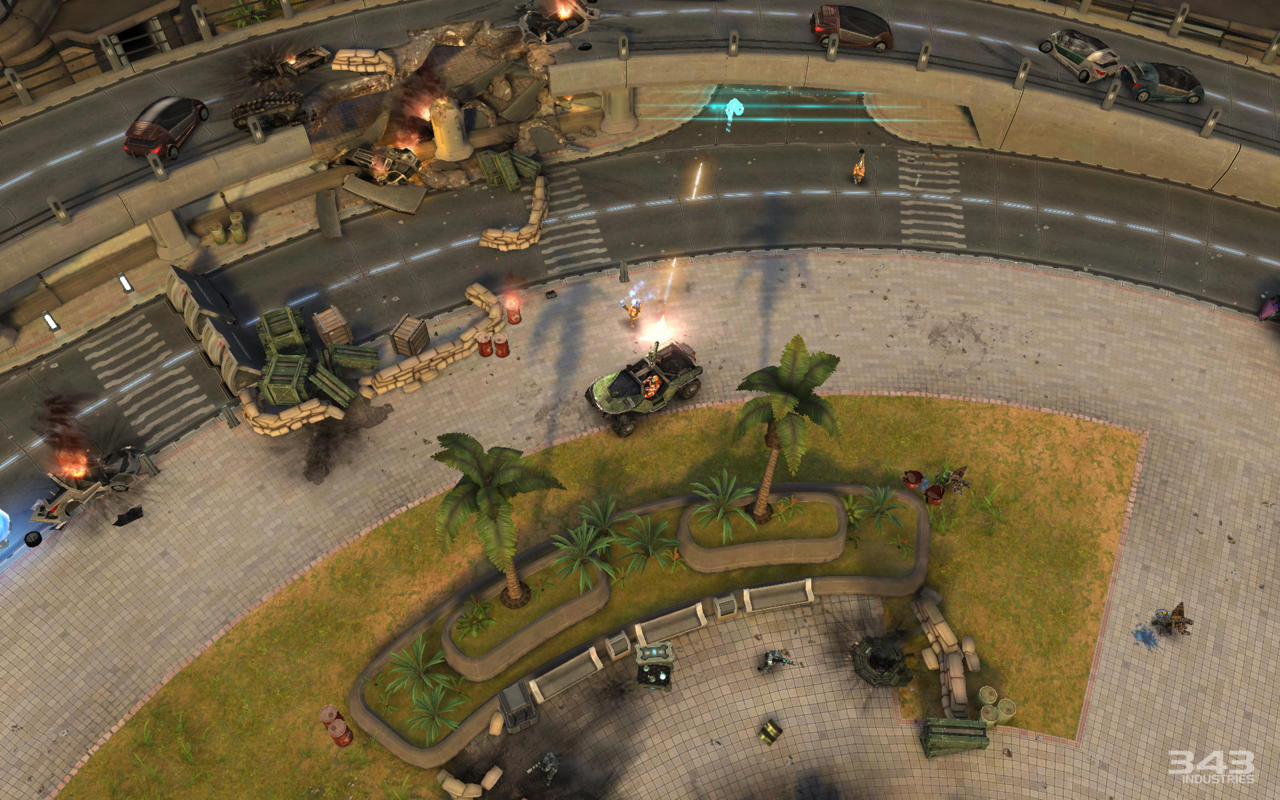Right from the landmark battle aboard the UNSC Pillar of Autumn, the Halo franchise has almost always been a team effort, even though Master Chief has done most of the heavy lifting in the mainline series. That's where all the spin-offs and novels come in. As the follow-up to Vanguard Games' Halo: Spartan Assault, Halo: Spartan Strike is not only a spin-off, but also a top-down shooter that reinforces the notion that Halo need not be limited to the first-person perspective. From a continuity standpoint, Spartan Strike takes bigger risks than Spartan Assault, setting reprisals from Halo 2 while giving more screen time to the Prometheans, who weren't introduced to the series until Halo 4.
Spartan Strike's bite-sized five-minute missions fit in well with a straightforward story involving the Artifact of Doom plot device. In this case, the artifact is called the Conduit, a device that functions as a Promethean portal key. It is also a tried and tested sci-fi term that has been used in Mass Effect, Dead Space, and as the title of a Sega-published first-person shooter. Through much of Spartan Strike, the Conduit is subjected to a football-like change of hands between the UNSC Marine Corps and the Covenant.

Equally engaging is the opportunity to revisit familiar areas from the main series. In Halo 2, New Mombasa was a war-torn battleground where Master Chief was just one of countless soldiers tasked to repel the Covenant. The raised visual perspective of Spartan Strike shows off New Mombasa as a highly vertical metropolis. While you're guiding a Spartan-IV along a commercial district in the foreground, UNSC troops are holding their own on a bridge in the background, hundreds of yards away. Although your player-character functions like a one-man army, nothing detracts from the implied accomplishments of the soldiers in the surrounding areas. Conversely, the location shift to Gamma Halo (also known as Installation 03) is a less engrossing environment, as, for the most part, it's a generic jungle accented with Forerunner architecture.
The 15 years Halo has been around offers more than enough time for minor timeline errors and potential retconning. It might be inconsistent to see Prometheans in a story arc related to Halo 2, but that doesn't dilute the gratification of making them disintegrate, especially when using their own weapons.
Spartan Strike's bite-sized five-minute missions fit in well with a straightforward story involving the Artifact of Doom plot device trope.
Much like the Rappys in Phantasy Star Online and the blackbirds in Bloodborne, the Halo Grunts are the series' annoyance incarnate, which makes melee kills with rifle butts all the more satisfying. Even without the first-person view, killing up close in Spartan Strike quenches the bloodlust for these troublesome halflings. As in Spartan Assault, transposing familiar enemies into an overhead-camera perspective works, because of the familiar weapons used to kill them. The battle rifle bridges the lethality of the sniper rifle with the firing rate of the assault rifle, and, as always, makes short work of any elite. The same goes for the mounted gun atop a warthog, which doesn't suffer from overheating.
If you've played Spartan Assault (and you should have already, if you're a fan of Halo's expanded universe), the Spartan Strike mission objectives will be very familiar. A given stage will involve one, or a combination, of the following objectives: get from Point A to Point B, destroy X objects, or survive for X seconds. Again, these are short missions, and the simplicity of these assignments works well for Spartan Strike. Holding your ground in a limited space offers a glimpse of how a Fireflight mode would work as a twin stick shooter. Whatever your objectives, it's the abundance of Covenant and Prometheans that serves as the game's connective tissue. The odds seldom feel overwhelming, but there's still a lot of death to go around. Thrilling moments, like vanquishing energy sword-wielding elites, often make high-score incentives a secondary priority. And with all the A.I. marines joining the fight, it's a mystery that Spartan Strike lacks multiplayer, especially when it was one of the big draws of Spartan Assault.

That's not to say Spartan Strike is bereft of features. Customizable loadouts, uncommon in the mainline Halo campaigns, let you pair the assault rifle with a rocket launcher right out the door. Add an armor ability like a regen field, and you have a Spartan who can go toe-to-toe with the Chief. You are fortified well enough that, potentially, you could clear Spartan Strike without dying. This is compounded by the mandatory auto-aim, which cannot be toggled off in the Settings menu. At least you can count on Halo Skulls to give the Covenant and the Prometheans a fighting chance. Whether it's lack of armor or low ammo pick-ups, there's something to increase the stakes. As usual, using Skulls isn't a purely masochistic exercise; reward flirts with risk, since XP is multiplied with Skulls.
XP is the juicy core of Spartan Strike's replay incentives. It's the currency for purchasing optional weapons like the Spartan laser or the sniper rifle. These armaments significantly help in fulfilling Assault Ops goals, purely non-mandatory assignments that yield more XP, bragging rights, and progress toward a couple of achievements. And while, typically, achievements are not worth noting, Halo: Spartan Strike's inclusion as an Xbox game for Windows means that achievements can already be earned without having to wait for the unannounced but presumptive Xbox One version.

Much like Spartan Assault before it, Spartan Strike is the closest we have to a Halo game, had it existed in the late 1980s arcades. While the lack of multiplayer is disappointing, it features more than enough loadout options to add variety that it warrants repeat playthroughs. More importantly, Spartan Strike still retains Halo's core combat appeal despite the top-down view, auto-aiming, and amped up armor abilities. It preserves the palpable tension in emptying two M7 Caseless SMGs while back-pedalling against a brute. It's a familiar predicament for Halo fans, but one that can be remedied in Spartan Strike with the one-button ease of an air strike. That might be unfair to the brute, but if you've ever been on the receiving end of a gravity hammer, an air strike is hardly a cheap countermeasure.